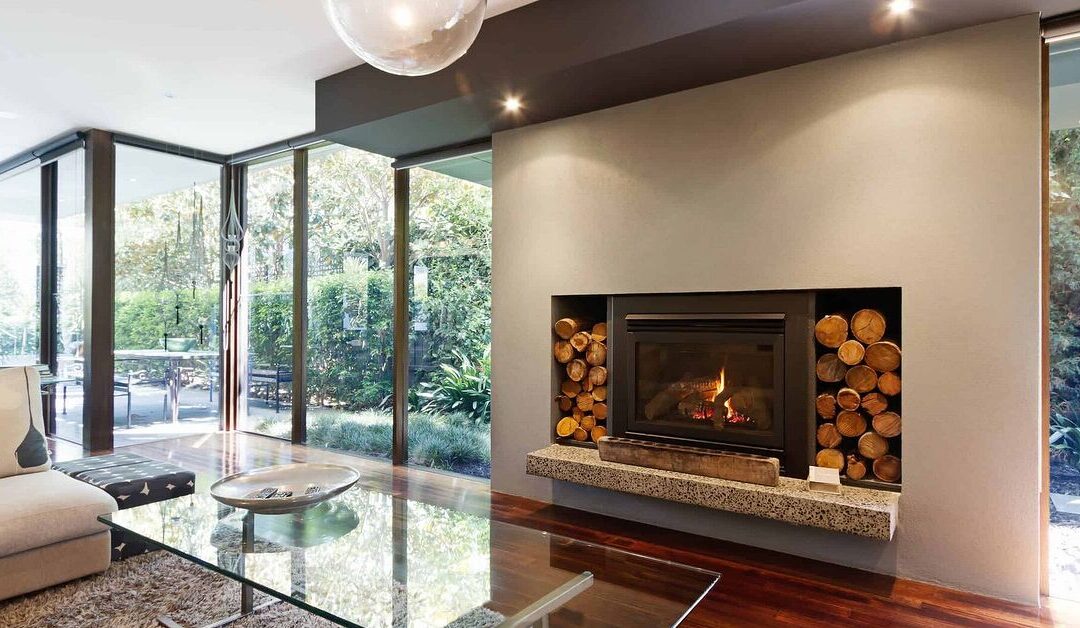Many homeowners in Maryland enjoy the warmth and convenience provided by gas fireplaces, especially during the colder months. However, a common question arises: can you leave a gas fireplace on all night?
Understanding the potential dangers and safety guidelines is essential to ensure the safe and efficient operation of your fireplace.
Natural gas fireplace inserts are popular options for existing fireplaces and new installations.
They provide warmth and heating efficiency, but there are important factors to consider to ensure the safest possible usage.
In this new article, we explore the correct answer to whether you can safely operate a gas fireplace continuously overnight.
Types of Gas Fireplaces and Inserts
Gas fireplaces are popular for their convenience and efficiency in providing warmth to living spaces. They come in various types, including:
- gas log fireplaces
- direct vent fireplaces
- vent-free fireplaces
- gas fireplace inserts
Each type has its own venting system, which impacts how it handles exhaust fumes and combustion by-products.
Gas Log Fireplaces
A gas log fireplace is a great addition to a home for people who want the visual effect of a traditional wood-fuelled fireplace without the hassle of storing firewood and the post-burning clean up as well.
You can have them installed in your existing masonry fireplace and use your existing chimney to send out the smoke and fumes.
Direct Vent Fireplaces
Direct vent fireplaces are fully sealed units that draw air from outside and vent exhaust fumes through an exhaust vent.
This design minimizes the risk of gas leaks and prevents potentially deadly combustion by-products from entering the living space.
These units can operate continuously, providing a comfortable temperature for extended periods without the risk of igniting nearby flammable materials.
- Related article:Maryland Gas Fireplace Maintenance: Do I Really Need It?
Gas Fireplace Inserts
A gas fireplace insert is ideal for modern homes and designed to fit into an existing fireplace. It is efficient, clean-burning, and provides a consistent heat source.
Easy to use with a remote or thermostat, they enhance home warmth and ambiance while reducing energy costs and emissions.
Vent-Free Fireplaces
Unlike the above three options, these do not use an exhaust vent.
Though it generally makes them easier to install, they must be used with caution and an abundance of natural ventilation.
This is because they can lead to the accumulation of toxic fumes if left unattended.
A vent free fireplace is not recommended for continuous operation and should only be run for two to three hours at a time to ensure safety.
Safety Concerns of All-Night Heating
If you are considering running your gas fireplace throughout the night as you sleep, it’s important to be aware of the potential safety risks.
Risks of Carbon Monoxide Poisoning
Gas fireplaces pose a risk of carbon monoxide poisoning, especially vent-free models lacking exhaust systems.
A gas leak or heater malfunction can increase this danger.
To prevent risks, ensure proper installation and maintenance, limit use, and install carbon monoxide detectors. Regular inspections are essential for safe operation.
Fire Hazards and Overheating
Fire hazards and overheating are significant concerns with gas fireplaces. Continuous use without supervision can cause house fires.
Direct vent fireplaces minimize risks by venting exhaust gases outside but should still be monitored. Vent-free fireplaces pose higher risks and require caution.
Gas fireplace regular maintenance and following manufacturer guidelines are essential for safety.
Benefits of Using a Gas Fireplace Timer
Using a gas fireplace timer offers several benefits, enhancing both safety and convenience:
- Ensures the fireplace operates only for the desired duration, reducing the risk of overheating and potential house fires.
- Maintains a comfortable temperature without the need for continuous supervision.
- Prevents the fireplace from running continuously, minimizing safety concerns and lowering energy costs.
- Beneficial for vent-free fireplaces, which should not be left unattended due to the higher risk of toxic gas build-up.
- Automatically turns off the fireplace, promoting a safer living environment and providing peace of mind.
Incorporating a timer into your gas fireplace setup enhances efficiency and safety, making it a valuable feature for any home.
- Related article: Why Your Gas Fireplace Needs To Be Pampered
Alternatives to Leaving a Gas Fireplace On All Night
Consider electric heaters, which offer consistent warmth and safety features like automatic shut-off to prevent overheating.
They can be placed in various rooms, allowing targeted heating without the risks of gas fireplaces.
Heated blankets are another cosy and energy-efficient option. With adjustable temperature settings and timers, they ensure comfort without the need for continuous fireplace use.
Programmable thermostats can maintain a comfortable temperature overnight.
Set them to lower heating when you go to bed and increase it before you wake, enhancing safety and reducing energy consumption compared to running a gas log fireplace all night.
Take Care with Your Gas Fireplace
While gas fireplaces provide warmth and comfort, it is not advisable to leave them on all night.
The risks of carbon monoxide poisoning, fire hazards, and overheating make it essential to follow safety guidelines and use these appliances responsibly.
Using a timer, proper ventilation, and regular maintenance can enhance the safe operation of your gas fireplace.
For overnight warmth, consider safer alternatives such as electric heaters, heated blankets, or programmable thermostats.
By prioritizing safety and efficiency, you can enjoy a cosy and secure home environment throughout the colder months.
Please note: Thank you for reading our new article “Can You Leave a Gas Fireplace on All Night?”
This information is provided for advice purposes only. Regulations differ from state to state, so please consult your local authorities or an industry professional before proceeding with any work.


